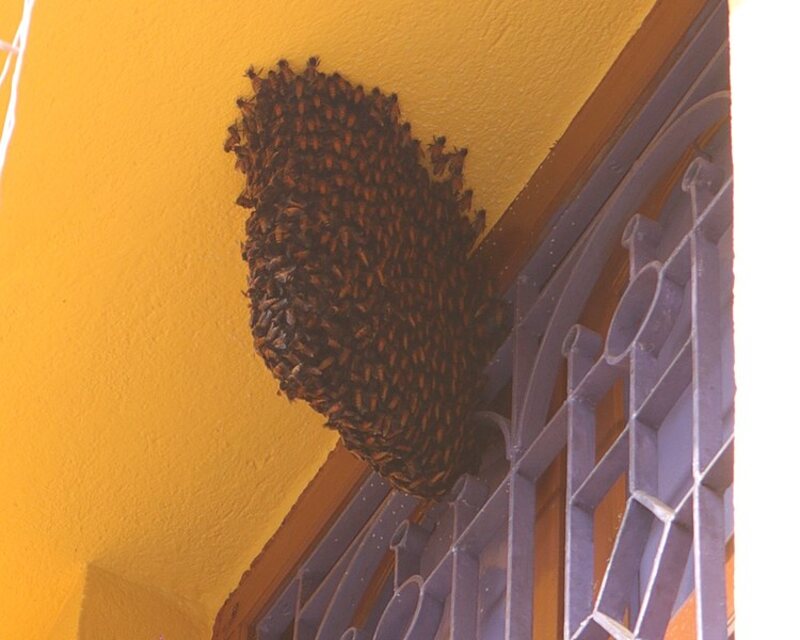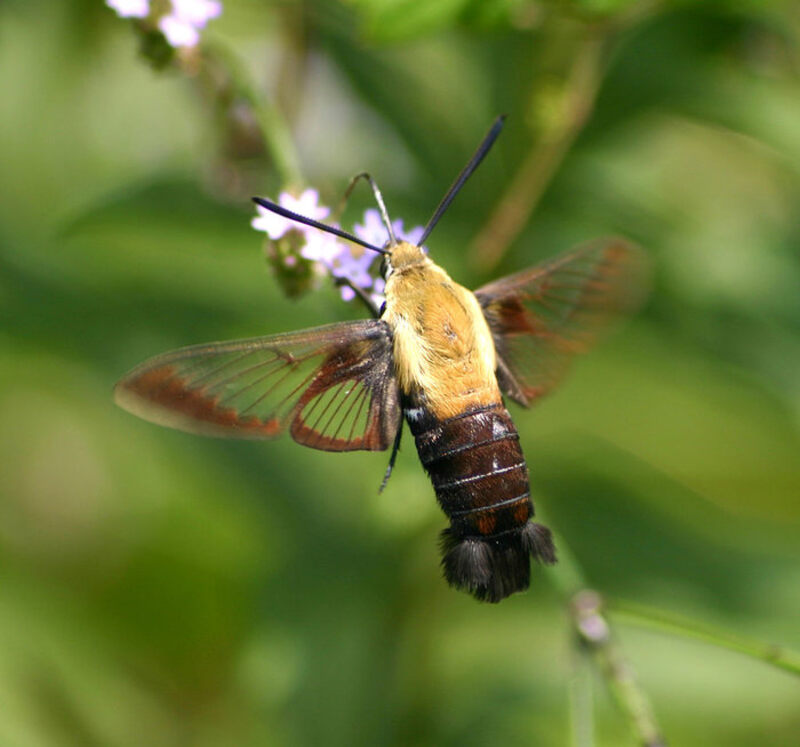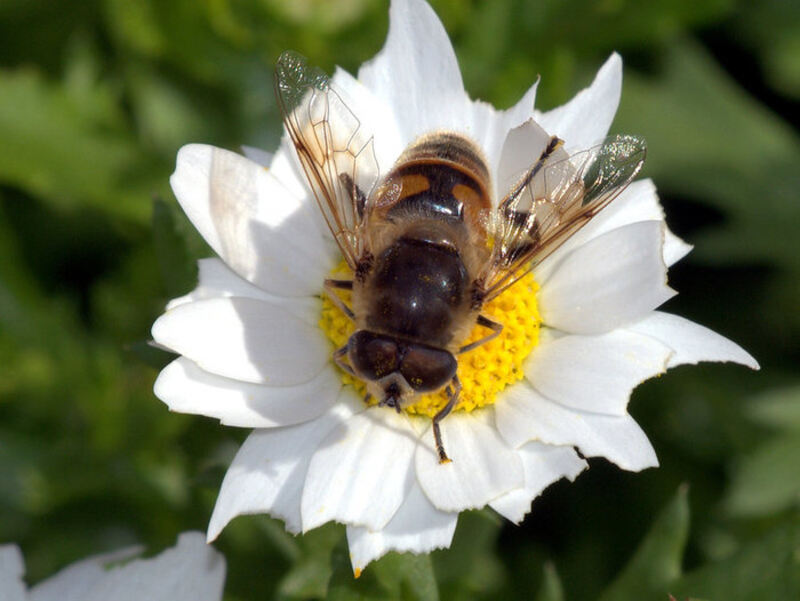
Don’t let that menacing stinger fool you. Bees aren’t looking to attack; they just want to go about their business collecting nectar, making honey, and pollinating plants. But if they build a hive too close to your home, you need to know how to get rid of bees.
It’s especially important to get rid of bees and their hive if your family members are allergic, as even one sting can threaten their lives.
To get rid of bees, try trapping them, relocating them, or excluding them.
Ways to Get Rid of Bees
Before committing to the eradication of these stinging insects, think about the level of risk they pose to your family and your pets.
Already an endangered species due to colony collapse, preservation of these insects is vital to our own survival. They’re the most important pollinators on the planet, blessing us with micro-nutrient-rich foods, honey, and plant diversity.
That said, if you have a serious infestation that intrudes into your living space, bees may consider you the intruders and do everything possible to defend their colony.
Here are some natural and chemical ways to get rid of bees:
How to get rid of bees naturally
As with all infestations, the best course of action is prevention. But if you’ve already got a nuisance bee population that needs controlling, repellents, traps, and pest control professionals can help.
1. Seal entry points
Canvass the exterior of your home for holes, cracks, and crevices, and caulk any you find. You also can use mesh screening to block these openings. This DIY method can stop a problem before it starts.
Make sure there isn’t an already-established nest inside those holes. If you block bees in, they’ll chew their way out and may end up getting inside the living areas of your home, presenting another problem.
Reducing yard debris also can keep away bees, as there will be fewer places for these insects to nest.
2. Relocate the hive
If you notice bees have set up shop on your siding, underneath your deck, or in a tree too close to the house, relocating the hive may be the best option.
If you attempt this yourself (not recommended), wait until nightfall when bees are resting inside the hive. Then, along with an assistant (beehives can weigh between 20 and 100 pounds), suit up in protective clothing and head outside.
Before moving the hive, block the entrance with a fabric or mesh material, so bees won’t rush out and sting you. Then, gently move the hive to the new predetermined location, away from heavily trafficked areas in your yard, and unblock the entrance.
The best way to successfully move a hive is to call a beekeeper who has experience in bee removal.

3. Use bee traps
Another effective way to get rid of bees in your yard is to buy a bee trap from your local hardware store. Using a non-toxic attractant, these traps can catch several species of stinging insects, including carpenter bees. Honeybees typically don’t fall for this lure.
Once captured, the insects will either suffocate in the bottom chamber or drown in the mix of water and dish soap in the top chamber. Every two months, empty the trap of dead bees and other insects, replace the attractant, and reset the trap.
You can also choose to build your own bee trap.
How to Get Rid of Bees with Chemicals
The only insecticide registered to kill bees inside of buildings is Ficam dust. Entomologists at the University of Kentucky warn it may take several applications to kill off the queen, caretaker bees, and larvae. That’s because the powdery substance isn’t always able to reach the inner workings of a nest.
If the larvae are able to mature, the hive could recover, and you’ll still have a problem. It’s best to treat the entire nest to ensure extermination.
Foaming bee and wasp insecticide sprays from your local store also work very well on contact, but be sure to use these outdoors only.

Photo Credit: Apurv013 / Wikimedia Commons / CC0 1.0
How to Get Rid of Bees Inside Your House
The presence of a beehive inside your walls can lead to structural damage. Hives can weigh up to 100 pounds, depending on how many bees are inside and how much honey they’re storing in the comb.
Your best bet is to call an exterminator to kill the bees and remove the entire hive. Besides continued damage, leftover hives can harbor dead bees, fermented honey, and pollen. Leftover hives also can cause a terrible stench, and they can attract other household pests, such as insects and rodents.
Essential oils to repel bees?
You may have heard essential oils, such as citronella, mint, and eucalyptus work as bee repellent. However, there is no research to back up these claims.
On the contrary, lemongrass, mint, tea tree, and other essential oils are used by beekeepers to kill off honey bee mites. The oils do not adversely affect the bees, themselves.
Bee Look-Alikes
First, let’s make sure your problem is with bees and not with insects that resemble bees.

Photo Credit: Peakpx / CC0-1.0
Wasps
Getting rid of bees is often easier than eliminating wasps. These black and yellow bugs are more aggressive and can sting several times. Honey bees die after stinging once.
Wasp and hornet stings penetrate deeper into the skin and therefore are a little more painful. Keep in mind: Like bees, parasitic wasps can be beneficial to your garden as they feed on harmful insects.
Yellow jackets
Yellow jackets are a species of wasp that tends to hang around garbage cans and picnics. They resemble honey bees, but are brighter in color and have smooth bodies. Bees won’t bother your backyard barbecue, since they’re after honey. Yellow jackets could care less about honey. The scent of food attracts them.

Photo Credit: Pollinator at English / Wikimedia Commons / CC BY-SA 3.0
Clear-winged sphinx moths
Unlike bees, clear-winged sphinx moths hover over flowers and suck nectar and pollen. They also don’t sting, but will take flight when threatened. Bees will land directly on the flower and sting when threatened.
Hornets
A natural enemy of the bee, hornets will attack a hive and eat honey bees. Hornets are usually black and white or reddish-brown. Some varieties of hornets can release an excruciatingly painful sting.

Photo Credit: Jean and Fred Hort / Flickr / CC BY 2.0
Flies
It’s easy to confuse some flies with bees because yellow and black flies have evolved to disguise themselves as bees to protect themselves from predators. Flies will also pollinate flowers, but don’t have stingers. Bees and wasps also have two sets of wings: Flies only have one set.
Types of Bees

Photo Credit: Jeffrey W. Lotz, Florida Department of Agriculture and Consumer Services, Bugwood.org / Wikimedia Commons / CC BY 3.0
Of the 20,000 different types of bees across the world, 4,000 live in North America. Of these, the three most common in the United States are honey bees, bumblebees, and carpenter bees. Other species of bees include Africanized honey bees, ground bees, squash bees, and mason bees.
A bee colony has a specific organizational structure, which includes drones, queens, and workers. In this matriarchal society, drones are male bees responsible for mating with queen bees of various colonies.
Queen bees are the only females in a colony that reproduce. Worker bees, also female, do not reproduce but gather pollen and nectar, raise young, and maintain and defend the beehive.
About half an inch to an inch in length, bees awaken from winter hibernation in spring and remain active into the fall. As temperatures begin to drop, bees retreat to their hives for another round of overwintering.
When to Call Bee Removal Professionals
Bees that have built their nests inside your walls will require the help of bee removal experts.
Whether you call in bee removal pros or beekeepers, these experts have the knowledge necessary to either safely remove or relocate a hive. They’ll also know when extermination is the only option – if the hive is a danger to people and pets.
Bees are more friend than foe. Unless removal is absolutely necessary, we should embrace them (figuratively) and honor the role they play in sustaining our environment and our lives.
Main Photo: Beehive closeup / Pixabay